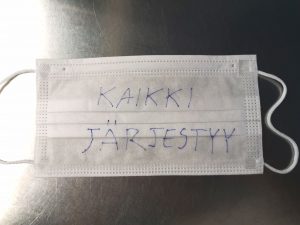Author: Chaitawat Boonjubun. 23rd March 2020.


In summer 2018, a medical doctor phoned me to discuss the issue of the city and public health. As he knew from a friend of mine that I was studying for a doctoral degree concerning urban studies, he asked me, ‘What is urban about public health?’ In other words, what are the linkages between ‘urban’ and public health? Arguably, one of the most convenient ways to define ‘urban’ is by distinguishing ‘urban’ from ‘rural’. In the case of Thailand, according to this doctor, statistical data regarding the number of patients with diabetes, heart disease, for example, did not show much difference between those who live in urban and rural settings. The doctor and I agreed that statistics alone seemed to be a challenge to persuade policymakers to draw up special measures in dealing with urban health issues. We thus discussed a wide range of factors that would make ‘urban health’ differ from ‘rural health’ including density, size of the population, health care facilities and services, governance, and the way of life. It is important to note that this discussion focused solely on the case of non-infectious diseases.
Keil and Ali, in their essay ‘Governing the Sick City: Urban Governance in the Age of Emerging Infectious Disease’ (2007: 848), published in Antipode, argue that the 2003 SARS outbreak was a result of ‘increased connectivity’ in the globalised world influenced by transportation technologies. They pointed out that urban areas were more vulnerable to infectious diseases due to high-density and accelerated land use. Furthermore, especially because of the ‘globality’ of cities, it was difficult to contain the outbreak within a city and by merely local health authorities.
In the wake of the on-going novel coronavirus outbreak, large cities have been hit harder than smaller cities in terms of: the number of affected citizens, for example, IS 438 cases in Uusimaa (including Helsinki) out of the total of 686 across Finland (Helsingin Sanomat, 23 March 2020) and 297 affected people in Bangkok Metropolitan Area out of 721 cases throughout Thailand (Department of Disease Control, 23 March 2020); the healthcare system becoming overload when the affected cases continue to rise abruptly; the severe impact of the outbreak on the city’s economy and employment as the majority of companies, stores, shops, and restaurants have shut down and workers have been laid off; and, the loss of urban life since public places are closed down and mobility is restricted. There are also unintended consequences, both negative and positive: a rural ‘exodus’ launched by the present situation might cause the city dwellers to carry the infectious disease with them to rural areas where health facilities are insufficient, but cities may become less polluted due to less commercial and industrial activities.
By looking at current official measures and orders used in many cities to tackle the outbreak, it shows complex power relations of jurisdictional responsibilities between state and city government/municipality in preventing, treating, and curing the disease. In most cases, cities/municipalities cannot implement emergency laws by themselves if a state of emergency has not yet been issued by the central government. Also, it is usually the role of state authorities (and of cities/municipalities for some cases) to redress the economic effects of the outbreak, for instance, to suspend mortgage and rent payments or to reduce electricity and water fees. This is the time for states and cities/municipalities to show their consolidation, and at once to place the lives of citizens above the economic growth of the city.
References
Department of Disease Control, Thailand (2020). Coronavirus Situation. Available from: http://covid19.ddc.moph.go.th/
Helsingin Sanomat (2020). Finland’s Corona Virus Status. Available from: https://korona.kans.io/?language=en.
Keil, R., & Ali, H. (2007). Governing the Sick City: Urban Governance in the Age of Emerging Infectious Disease. Antipode, 39(5), 846-873. Available from: https://onlinelibrary.wiley.com/doi/full/10.1111/j.1467-8330.2007.00555.x